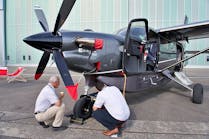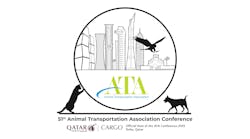Regulatory Discord: FAA Can’t Get Out of Its Own Way with AD Legal Interpretation
In April, the FAA responded to public comments on a proposed legal interpretation that clarified the agency’s position regarding how to comply with an airworthiness directive (AD). That interpretation was issued in response to a request from the industry stakeholders on the Organization Procedures Working Group for the Airworthiness Directive Implementation Aviation Rulemaking Committee (AD ARC) to address a number of vexing AD-related issues. Most notably, the AD ARC asked the agency to elaborate on an operator’s continuing obligation to maintain a product in an AD-mandated configuration after the unsafe condition is resolved. Unfortunately, the most-recent interpretation reiterates that AD’d products will never be able to re-enter a traditional maintenance program.
As the Aeronautical Repair Station Association (ARSA) pointed out in its comments, the FAA misunderstands the relationship among the design, production, maintenance, and operating rules in Title 14 of the Code of Federal Regulations (CFR). The agency disregards the overall regulatory structure thereby creating conflicting requirements and considerable confusion. When applied as intended the rules provide a logical means to address unsafe conditions in both new products and operating aircraft.
The FAA’s proposed interpretation, however, finds that initial and continuing compliance for all ADs is required. This overly inclusive approach to AD compliance even encompasses those directives that require a “terminating action” to remove an unsafe condition from a product. A typical example of a terminating AD is one that instructs maintenance providers to remove or replace a defective part. The agency asserts that once the terminating action is completed, the resulting configuration is an FAA-approved type design which must be maintained under §§ 39.7 and 39.9.
The aviation industry, including a number of AD ARC members, have vigorously rejected this position because continued compliance for terminating ADs should — and does — fall within the ambit of the rules governing maintenance and operations. In other words, once the AD actions have been accomplished Part 39 compliance is terminated and the proper operation, condition, and continued airworthiness of the aircraft are dictated by the relevant regulations for those activities.
In order to be airworthy, an aircraft must conform to its type design and be in a condition for safe operation. New aircraft that have been released from the factory sans the unsafe condition under an updated type design are maintained and operated in accordance with Part 43 and the various operations rules. If an aircraft’s type design is modified by an AD, there is no reason to treat it differently and require it to be maintained under Part 39. In both instances the aircraft must be maintained in an airworthy condition, which means complying with the approved design.
While the FAA fails to properly apply its own regulatory framework, ARSA and other industry stakeholders will continue to work with the agency on developing a clear and coherent AD compliance policy. Unambiguous regulations do not need to be interpreted. The existing regulatory structure logically and effectively resolves unsafe conditions and prevents their reintroduction into the U.S. fleet. All the FAA needs to do is get out of its own way and let its system work.
Ryan M. Poteet is senior associate of Obadal, Filler, MacLeod & Klein, P.L.C. advising clients in international aviation safety regulation and government affairs. He serves as regulatory affairs manager for the Aeronautical Repair Station Association.


